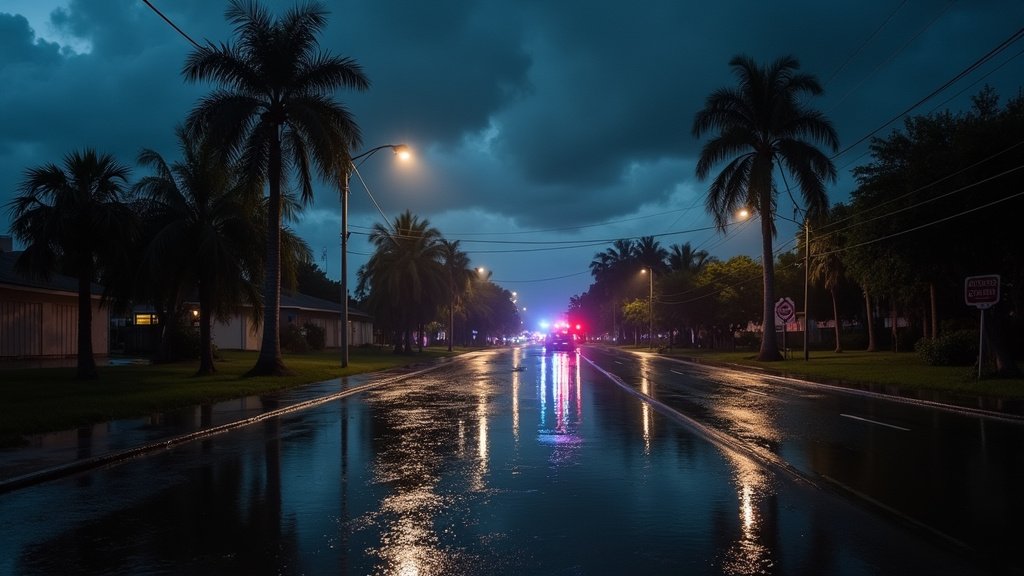Miami, Florida – In a poignant convergence of past and present, Miami’s historic Freedom Tower, a hallowed symbol for generations of Cuban exiles, has officially reopened its doors as a museum. The reopening, following an extensive $65 million renovation, marks a significant moment for the city, intended to honor a rich legacy while, perhaps unexpectedly, stirring a complex political awakening within a crucial local demographic. This development, already a subject of considerable local news, gains particular resonance against the backdrop of the current presidential administration’s escalated migrant arrests, policies that are prompting deep reconsideration among the very Cuban Americans who largely supported President Donald Trump.
The Enduring Legacy of the Freedom Tower
For over a decade, between 1962 and 1974, the Freedom Tower stood as a compassionate gateway, often dubbed the “Ellis Island of the South,” for hundreds of thousands of Cuban refugees. Fleeing the communist regime of Fidel Castro, these individuals and families arrived on Miami’s shores, seeking asylum and the promise of a new life in the United States. Within the tower’s stately walls, they underwent processing, received aid, and took their first steps towards integrating into American society. The tower became an enduring symbol of resilience, sacrifice, and the relentless pursuit of liberty, etched deeply into the collective memory of the Cuban diaspora. Its architectural grandeur, originally designed for the Miami News, ironically transformed into a beacon of hope for those yearning for freedom, making its historical significance paramount.
Now, after meticulous restoration, the Freedom Tower has been reborn not merely as a monument, but as a vibrant museum. This transformation, a testament to its pivotal role in American immigration history, aims to preserve and highlight the historical and ongoing contributions of immigrants to the United States. Its galleries will undoubtedly serve as a powerful narrative, reminding visitors of the diverse tapestry that has woven together the nation’s strength and character. The museum’s opening is more than just an architectural achievement; it is a cultural and historical milestone for Miami, reinforcing its identity as a global city forged by migration.
A Shifting Political Landscape in Miami
The reopening unfolds at a particularly fraught moment in the political landscape of Miami, a city profoundly shaped by its immigrant communities. The Cuban American community, a key demographic in Miami’s political landscape, has long been a formidable force, wielding significant influence in local, state, and national elections. Historically, this community has gravitated towards the Republican Party, largely due to its fervent anti-communist stance and a perceived alignment with conservative values. This allegiance was particularly evident in their robust support for Donald Trump, whose strong rhetoric against socialist regimes and promises of a tougher stance on Cuba resonated deeply with many.
However, a palpable shift is now underway. The Trump administration’s increased arrests of migrants, a broad policy initiative, has begun to ripple through the very heart of this community, sparking profound introspection and discomfort. For many Cuban Americans, whose own narratives are deeply rooted in the migrant experience—having themselves or their parents arrived as refugees—the sight of widespread detentions and deportations, even if primarily directed at other nationalities, strikes a jarring chord. The images and stories emerging from the border and internal ICE operations have created a challenging dilemma: how to reconcile a commitment to a political leader with policies that, at their core, seem to contradict the very spirit of refuge that defined their own arrival and the essence of the Freedom Tower itself. The ethical and moral implications of these policies are forcing a difficult re-evaluation of traditional political alignments, leading many to reconsider their stance.
The Museum’s Message Against Current Policies
The irony of the Freedom Tower’s reopening as a museum dedicated to immigrant contributions, simultaneous with intensified migrant arrests, is not lost on observers. The museum’s stated aim, to spotlight the indelible impact of newcomers throughout American history, serves as a powerful counter-narrative to the prevailing rhetoric of exclusion. It posits that immigration is not merely an act of seeking refuge, but a dynamic force that enriches economies, diversifies cultures, and strengthens societies. This mission feels particularly urgent in the current climate, where debates around immigration policy dominate headlines and divide public opinion.
The stories curated within the tower’s new museum walls—tales of struggle, triumph, and integration—stand in stark contrast to the challenges faced by today’s migrants. They offer a poignant reminder that the narrative of America has always been, and continues to be, one of new arrivals shaping its destiny. The museum effectively argues that the legacy of those who passed through its doors from 1962 to 1974 is not a relic of the past, but a living, breathing testament to the enduring American ideal of opportunity for all who seek it, regardless of their origin.
Miami’s Enduring Spirit and the Path Forward
The convergence of the Freedom Tower’s optimistic reopening and the sobering political developments it highlights creates a dynamic tension in Miami. It underscores the city’s unique position as a microcosm of broader national conversations about identity, belonging, and the future of immigration in the United States. The trending discussion around these issues will undoubtedly continue to evolve, shaping not only local politics but potentially influencing national discourse.
As the Freedom Tower embarks on its new chapter as a museum, it stands not just as a monument to history, but as a vital touchstone for contemporary dialogue. It encourages a deeper reflection on the principles that founded the nation and the ongoing responsibility to those who seek its shores. In a city like Miami, where the past is ever-present in the vibrant cultural tapestry, the reopened Freedom Tower is more than just a tourist attraction; it is a powerful, living symbol of hope and a profound reminder of the enduring contributions of all immigrants to the fabric of American life.




